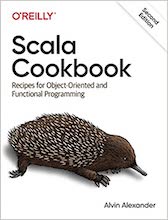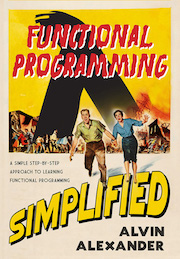Axis 2 example source code file (AsyncResponse.java)
The Axis 2 AsyncResponse.java source code/*
* Licensed to the Apache Software Foundation (ASF) under one
* or more contributor license agreements. See the NOTICE file
* distributed with this work for additional information
* regarding copyright ownership. The ASF licenses this file
* to you under the Apache License, Version 2.0 (the
* "License"); you may not use this file except in compliance
* with the License. You may obtain a copy of the License at
*
* http://www.apache.org/licenses/LICENSE-2.0
*
* Unless required by applicable law or agreed to in writing,
* software distributed under the License is distributed on an
* "AS IS" BASIS, WITHOUT WARRANTIES OR CONDITIONS OF ANY
* KIND, either express or implied. See the License for the
* specific language governing permissions and limitations
* under the License.
*/
package org.apache.axis2.jaxws.client.async;
import org.apache.axis2.jaxws.ExceptionFactory;
import org.apache.axis2.jaxws.core.MessageContext;
import org.apache.axis2.jaxws.description.EndpointDescription;
import org.apache.axis2.jaxws.handler.AttachmentsAdapter;
import org.apache.axis2.jaxws.handler.HandlerChainProcessor;
import org.apache.axis2.jaxws.handler.HandlerInvokerUtils;
import org.apache.axis2.jaxws.handler.TransportHeadersAdapter;
import org.apache.axis2.jaxws.message.attachments.AttachmentUtils;
import org.apache.axis2.jaxws.spi.Constants;
import org.apache.axis2.jaxws.spi.migrator.ApplicationContextMigratorUtil;
import org.apache.commons.logging.Log;
import org.apache.commons.logging.LogFactory;
import javax.xml.ws.Response;
import java.util.HashMap;
import java.util.Map;
import java.util.concurrent.CancellationException;
import java.util.concurrent.CountDownLatch;
import java.util.concurrent.ExecutionException;
import java.util.concurrent.TimeUnit;
import java.util.concurrent.TimeoutException;
/**
* The AsyncResponse class is used to collect the response information from Axis2 and deliver it to
* a JAX-WS client. AsyncResponse implements the <link>javax.xml.ws.Response API that is
* defined in the JAX-WS 2.0 specification. The <code>Response object will contain both the
* object that is returned as the response along with a <link>java.util.Map with the context
* information of the response.
*/
public abstract class AsyncResponse implements Response {
private static final Log log = LogFactory.getLog(AsyncResponse.class);
private boolean cancelled;
private Throwable fault;
private MessageContext faultMessageContext;
private MessageContext response;
private EndpointDescription endpointDescription;
private Map<String, Object> responseContext;
private CountDownLatch latch;
private boolean cacheValid = false;
private Object cachedObject = null;
protected AsyncResponse(EndpointDescription ed) {
endpointDescription = ed;
latch = new CountDownLatch(1);
}
protected void onError(Throwable flt, MessageContext faultCtx) {
if (log.isDebugEnabled()) {
log.debug("AsyncResponse received a fault. Counting down latch.");
}
fault = flt;
faultMessageContext = faultCtx;
faultMessageContext.setEndpointDescription(endpointDescription);
// Probably a good idea to invalidate the cache
cacheValid = false;
cachedObject = null;
latch.countDown();
if (log.isDebugEnabled()) {
log.debug("New latch count = [" + latch.getCount() + "]");
}
}
protected void onComplete(MessageContext mc) {
if (log.isDebugEnabled()) {
log.debug("AsyncResponse received a MessageContext. Counting down latch.");
}
// A new message context invalidates the cached object retrieved
// during the last get()
if (response != mc) {
cachedObject = null;
cacheValid = false;
}
response = mc;
response.setEndpointDescription(endpointDescription);
// Check for cached attachment file(s) if attachments exist.
if(response.getAxisMessageContext().getAttachmentMap() != null){
AttachmentUtils.findCachedAttachment(response.getAxisMessageContext().getAttachmentMap());
}
latch.countDown();
if (log.isDebugEnabled()) {
log.debug("New latch count = [" + latch.getCount() + "]");
}
}
//-------------------------------------
// javax.xml.ws.Response APIs
//-------------------------------------
public boolean cancel(boolean mayInterruptIfRunning) {
// The task cannot be cancelled if it has already been cancelled
// before or if it has already completed.
if (cancelled || latch.getCount() == 0) {
if (log.isDebugEnabled()) {
log.debug("Cancellation attempt failed.");
}
return false;
}
cancelled = true;
return cancelled;
}
public Object get() throws InterruptedException, ExecutionException {
if (cancelled) {
throw new CancellationException("The task was cancelled.");
}
// Wait for the response to come back
if (log.isDebugEnabled()) {
log.debug("Waiting for async response delivery.");
}
latch.await();
Object obj = processResponse();
return obj;
}
public Object get(long timeout, TimeUnit unit)
throws InterruptedException, ExecutionException, TimeoutException {
if (cancelled) {
throw new CancellationException("The task was cancelled.");
}
// Wait for the response to come back
if (log.isDebugEnabled()) {
log.debug("Waiting for async response delivery with time out.");
log.debug("timeout = " + timeout);
log.debug("units = " + unit);
}
latch.await(timeout, unit);
// If the response still hasn't been returned, then we've timed out
// and must throw a TimeoutException
if (latch.getCount() > 0) {
throw new TimeoutException(
"The client timed out while waiting for an asynchronous response");
}
Object obj = processResponse();
return obj;
}
public boolean isCancelled() {
return cancelled;
}
public boolean isDone() {
return (latch.getCount() == 0);
}
public Map getContext() {
return responseContext;
}
private Object processResponse() throws ExecutionException {
// If the fault object is not null, then we've received a fault message and
// we need to process it in one of a number of forms.
if (fault != null) {
if (log.isDebugEnabled()) {
log.debug("A fault was found. Starting to process fault response.");
}
Throwable t = processFaultResponse();
// JAXWS 4.3.3 conformance bullet says to throw an ExecutionException from here
throw new ExecutionException(t);
}
// If we don't have a fault, then we have to have a MessageContext for the response.
if (response == null) {
throw new ExecutionException(ExceptionFactory.makeWebServiceException("null response"));
}
// Avoid a reparse of the message. If we already retrived the object, return
// it now.
if (cacheValid) {
if (log.isDebugEnabled()) {
log.debug("Return object cached from last get()");
}
return cachedObject;
}
// TODO: IMPORTANT: this is the right call here, but beware that the messagecontext may be turned into
// a fault context with a fault message. We need to check for this and, if necessary, make an exception and throw it.
// Invoke inbound handlers.
TransportHeadersAdapter.install(response);
AttachmentsAdapter.install(response);
HandlerInvokerUtils.invokeInboundHandlers(response.getMEPContext(),
response.getInvocationContext().getHandlers(),
HandlerChainProcessor.MEP.RESPONSE,
false);
// TODO: Check the type of the object to make sure it corresponds with
// the parameterized generic type.
Object obj = null;
try {
if (log.isDebugEnabled()) {
log.debug("Unmarshalling the async response message.");
}
obj = getResponseValueObject(response);
// Cache the object in case it is required again
cacheValid = true;
cachedObject = obj;
}
catch (Throwable t) {
if (log.isDebugEnabled()) {
log.debug("An error occurred while processing the response");
}
throw new ExecutionException(ExceptionFactory.makeWebServiceException(t));
}
if (log.isDebugEnabled() && obj != null) {
log.debug("Unmarshalled response object of type: " + obj.getClass());
}
responseContext = new HashMap<String, Object>();
// Migrate the properties from the response MessageContext back
// to the client response context bag.
ApplicationContextMigratorUtil.performMigrationFromMessageContext(
Constants.APPLICATION_CONTEXT_MIGRATOR_LIST_ID,
responseContext, response);
return obj;
}
private Throwable processFaultResponse() {
// A faultMessageContext means that there could possibly be a SOAPFault
// on the MessageContext that we need to unmarshall.
if (faultMessageContext != null) {
// it is possible the message could be null. For example, if we gave the proxy a bad endpoint address.
// If it is the case that the message is null, there's no sense running through the handlers.
if (faultMessageContext.getMessage() != null)
// Invoke inbound handlers.
// The adapters are intentionally NOT installed here. They cause unit test failures
// TransportHeadersAdapter.install(faultMessageContext);
// AttachmentsAdapter.install(faultMessageContext);
HandlerInvokerUtils.invokeInboundHandlers(faultMessageContext.getMEPContext(),
faultMessageContext.getInvocationContext()
.getHandlers(),
HandlerChainProcessor.MEP.RESPONSE,
false);
Throwable t = getFaultResponse(faultMessageContext);
if (t != null) {
return t;
} else {
return ExceptionFactory.makeWebServiceException(fault);
}
} else {
return ExceptionFactory.makeWebServiceException(fault);
}
}
public abstract Object getResponseValueObject(MessageContext mc);
public abstract Throwable getFaultResponse(MessageContext mc);
}
Other Axis 2 examples (source code examples)Here is a short list of links related to this Axis 2 AsyncResponse.java source code file: |
 The search page
The search page Other Axis 2 source code examples at this package level
Other Axis 2 source code examples at this package level Click here to learn more about this project
Click here to learn more about this project
